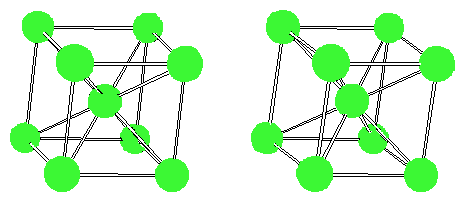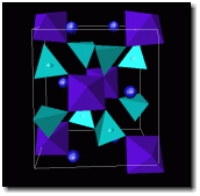HOME
Machina Dynamica's Brilliant Pebbles
Theory of Operation - Power to the Pebble

Copyright 2004.....by Geoff Kait, Machina Dynamica
About the Author
Geoff Kait obtained a BS Aerospace Engineering from the University of Virginia (theoretical fluid dynamics/propulsion, nuclear physics, statistical thermodynamics, indeterminate structures, etc.). Undergraduate thesis: Design of low-thrust propulsion system for interplanetary travel utilizing momentum transfer mechanisms in metal crystal bombarded by high-energy rare gas ions. Work experience: aerodynamics of high performance aircraft; radio and satellite communications. He incorporated Machina Dynamica in 1998; he designed of Nimbus Sub-Hertz Isolation Platform, Promethean Base isolation stand, Brilliant Pebbles, Tru-Tone Duplex Covers, Flying Saucers for Windows and Wall Outlets, Baby Promethean Mini Springs, Super Stiff Springs, Blue Meanies, Quark! Pure natural cork, CD Re-animator Stroboscopic Light Gun, New Dark Matter, Quantum Temple Bell, Particle Accelerator Tourmaline Gun, The Teleportation Tweak, The Clever Little Clock, Morphic Message Labels, Crystal & Wood Acoustic Resonator and The Super Intelligent Chip. He is the author of How the Intelligent Chip Works - The Definitive Explanation and The Disintegration of Time - The Real Story of How the Clever Little Clock Works and How the Teleportation Tweak Works, the Whole Story..
Introduction
Brilliant Pebbles is an original concept of Machina Dynamica. Brilliant Pebbles capitalizes on two specific properties of mineral crystals; these properties - vibration absorption and Radio Frequency Interference/Electromagnetic Interference (RFI/EMI) absorption - are the consequence of atomic mechanisms in the crystals' highly symmetrical structures. But, not necessarily, as we will see below, the consequence of piezoelectricity.
All Brilliant Pebbles products come in clear thin plastic ziplock bags that contain semiprecious and precious stones of various types, each possessing a unique, highly symmetrical crystal structure as well as unique physical properties. Mini and Mikro Brilliant Pebbles are much smaller than the Large size and contain a wider variety of crystal types. All sizes of Brilliant Pebbles function primarily as resonance control devices, but in some locations may act primarily as an RFI/EMI absorber. Each size of Brilliant Pebbles has its own set of applications. Highly-specialized preparation & assembly procedures contribute significantly to Brilliant Pebbles' effectiveness.
Crystal Lattice Structures
Some solid materials - most notably, metals & minerals - are comprised of atoms arranged in highly symmetrical, geometric structures called "crystal lattices." These structures are adopted by the materials because they constitute the lowest energy states of the atoms. A simplified crystal lattice structure is illustrated below; electric binding forces are shown interconnecting the atoms in the lattice. A 3-D image of the crystal lattice below can be visualized by allowing your eyes to cross slightly (de-focus) while viewing the two green cubes from a distance of about 14 inches from the computer screen. A "virtual" 3-D green cube will form between the other two 2-D images.

A more complex arrangement of molecules and atoms within a lattice structure is shown below for Jadeite (sodium aluminum silicate).

Kinetic Energy and Virtual Springs
The temperature of a mineral crystal, as for any material, is proportional to the average kinetic energy of its atoms. External energy forces the atoms in the mineral crystal to move more energetically (i.e., gain kinetic energy); applying heat or mechanical or acoustic energy to the crystal increases the kinetic energy of the atoms and raises the temperature of the crystal.
To illustrate how mechanical (including acoustic) energy is converted to heat in a mineral crystal, consider the extreme case of a crystal at a temperature approaching Absolute Zero (-459 degrees F), the lowest possible temperature, when atoms in the crystal lattice maintain their lowest energy positions with very little or no motion whatsoever. Any mechanical energy (e.g., acoustic waves or mechanical vibration), applied to that extremely cold crystal material forces the atoms to begin to vibrate around their equilibrium positions in the lattice - the greater the energy applied, the more energetic the vibration of the atoms. At the same time, the electric forces binding the atoms together begin to stretch and compress slightly to allow for the higher energy configuration; each atom acts as if it were connected to its neighbors by extremely small springs (see animation below). At room temperature the process is the same: energy applied to a crystal at room temperature increases the kinetic energy of the atoms and the potential energy of the compressing/stretching "virtual springs" (electric binding forces). Since the temperature of the crystal is a function of the kinetic energy of its atoms (same as for any material), it follows that the crystal is simply converting mechanical or acoustic energy to heat. The reason Brilliant Pebbles is such an effective energy dissipater is that energy is transferred more efficiently and rapidly than other energy dissipation type devices/materials.
The typical motion of atoms and spring-like electric binding forces in a crystal lattice are illustrated below; note in-phase and out-of phase modes of oscillation of the atoms.

Sources of Mechanical and Acoustic Energy in the Room
Major sources of unwanted acoustic energy are corners of the listening room, where surprisingly high sound pressure levels are produced when music is playing - these levels can actually be 8-10 dB higher than the average sound pressure level in the room -- about eight times higher! Room corners project acoustic energy out into the room when music is playing - as if there were many additional speakers in the room interfering with the pure signal of the primary speakers - producing phase distortion at the listening position ("comb filter effect"). For this reason, room corners are outstanding locations for the Large Brilliant Pebbles. In the corner on the floor, even a carpeted floor, Brilliant Pebbles significantly improves dynamic range and lowers distortion of the audio system. While Large Brilliant Pebbles in only one corner can produce excellent results, placing them in more than one corner usually produces the best results. Two other excellent locations for the Large size bottle are (1) in front of and to the outside of each speaker and (2) midway between the speakers in the plane formed by the front faces of the speakers. The new Extra-Large BP is intended for corners of larger rooms and on top of larger speaker cabinets. NOTE: Precise locations for the standing waves around room corners (and other locations in the room) are best determined using a test tone and sound pressure meter. Frequently the actual standing wave is not located directly in the corner, but some distance to one side of the corner - e.g., 12 or 24 inches.
Wherever unwanted mechanical or acoustic energy is produced in the audio system - speaker cabinets, CD/DVD/SACD players and tube amplifier output transformers - are good locations for Brilliant Pebbles. A Tube Trap produces (unwanted) mechanical energy during operation and a Large BP on its top surface improves Tube Trap performance ("A Better Tube Trap," you could say). The performance of (conventional) speakers is usually improved by placing one or more Large BP on the top of each speaker cabinet. A large BP on each output transformer of tube amps is also usually effective. A Large or Mini BP can be effective when placed on the armboard of a turntable.
Crystals and RFI/EMI Absorption
In addition to vibration dissipation characteristics, Brilliant Pebbles exhibits RFI/EMI absorption characteristics which, like vibration absorption, is accomplished via atomic mechanisms in the crystal lattice. Electromagnetic fields are produced by electronic components and elements that can interfere with audio system performance. Each mineral type in the Brilliant Pebbles possesses a unique, frequency-specific (i.e., narrow band) absorption characteristic; consequently, the variety of mineral types provides a much wider band of RFI/EMI absorption than could a single crystal type. This electromagnetic absorption property of Brilliant Pebbles is especially evident when the smallest size "Mikro" is placed on top of Quantum Symphony or Quantum ElectroClear line stabilizers.
Why Crystals Don't Operate via Piezoelectric Effect for RFI/EMI Absorption
In some cases, it's possible that crystals absorb RFI/EMI, however, contrary to popular opinion, crystals do not operate via piezoelectric effect if, in fact, they are capable of absorbing RFI/EMI. The reason the piezoelectric effect cannot be the operating mechanism is because the peizoelectric requires pressure to produce an electric voltage, that is the very definition of the piezoelectric effect. Since electromagnetic waves are comprised of photons - which have no mass, and which is why radio waves can travel at the speed of light - they cannot produce pressure on the crystals, since pressure requires force of some sort, mechanical force, for example. F equals ma, so without mass there can be no force. Therefore, if crystals can absorb RFI/EMI some other mechanism in the crystal lattice structure is responsible. It is frequently assumed that because crystals are effective on power cord plugs, near electron tubes, on top of transformers, etc. that crystals must work via RFI/EMI absorption; however, in those particular locations there is considerable mechanical vibration, thus vibration absorption is the most likely mechanism.
Sizes of Brilliant Pebbles for Various Applications
Over a period of time, Machina Dynamica developed four sizes of Brilliant Pebbles, each addressing specific problems in the room and system: Large Brilliant Pebbles is intended for speaker cabinets, on top of tube traps, room corners, satellite TV receivers and output transformers of tube amps. The Mini BP is intended for the top of CD/DVD/SACD players, top of speaker cabinets, proximity to small electron tubes as well as on speaker cable terminal jacks. The Mikro BP (about 1/4 the mass of the Mini) is intended for proximity to electron tubes, on top of Quantum ElectraClear & Symphony line stabilizers, attached to interconnects and digital cable on the RCA jacks and taped to glass doors and windows in the listening room. The newer Extra Large size was developed for the corners of large rooms and for the top of large speaker cabinets.
Crystals can be Unpredictable
Experience in a great many systems has shown that Brilliant Pebbles can sometimes affect the sound in unpredictable ways. So, some experimentation is usually necessary to establish ideal locations for Brilliant Pebbles in a given room/system. NOTE: It is recommended that a sound pressure meter and test tone (315 Hz or thereabouts) be used to establish ideal locations around the room - where highest acoustic peaks are found. For example, the acoustic peak in a room corner can often be located a foot or two from the actual corner. A typical room/system will yield quite a number of these "ideal locations" for Brilliant Pebbles. Brilliant Pebbles is capable of dramatically lowering audio noise and distortion - perhaps especially in systems where great pains have already been taken to ensure the highest possible performance.
____________




